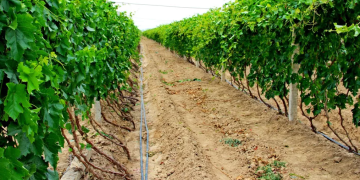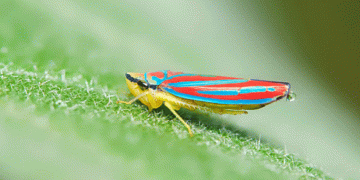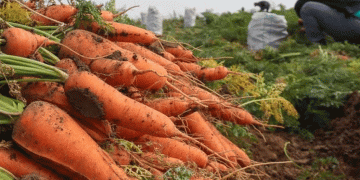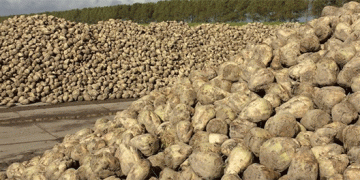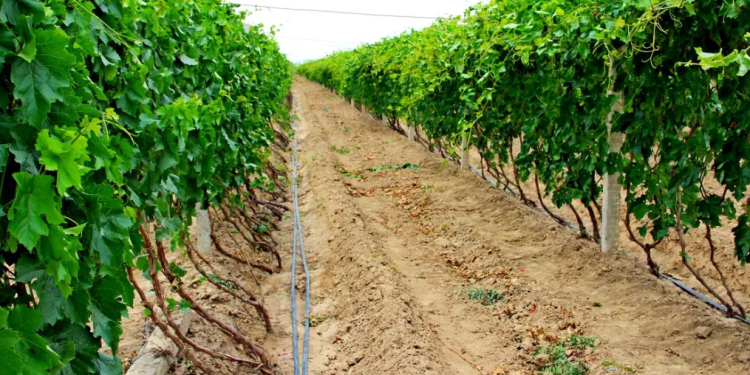#Vineyardirrigation #DirectRoot-Zone #Subsurfacedripirrigation #Winegrapeproduction #Droughtresilience #Sustainableagriculture
In the world of winegrape production, where climate change and drought pose increasingly formidable challenges, innovative solutions are crucial to sustain healthy vineyards and maintain crop productivity. Enter Direct Root-Zone (DRZ) subsurface drip irrigation, a groundbreaking technique that promises to reshape the landscape of vineyard irrigation.
A decade of extensive research conducted in the vineyards of Washington State’s Columbia Basin has provided compelling evidence of the effectiveness of DRZ subsurface drip irrigation. Not only does it save precious water resources, but it also preserves winegrape yields and quality. According to the latest data, this method, which delivers water through plastic tubes to depths of 30-90 cm below the soil surface, can save up to 35 percent of water compared to traditional surface drip methods.
One of the most fascinating findings is that vine activity and production remain consistent across different water delivery depths within the root zone. This discovery has led to a recommendation to release water at depths of 45-60 cm, a level that appears to strike a harmonious balance between vine performance and water conservation.
Enhancing Resilience to Drought
In regions where winegrape cultivation is a major agricultural industry, such as those with Mediterranean climates, ensuring vineyard resilience to drought is imperative. Surface drip irrigation has long been the go-to method for supplying supplementary water during dry spells, but it is not without its drawbacks. Surface irrigation is susceptible to water loss through evaporation and competition from unwanted plants, often referred to as “weeds.”
In contrast, DRZ subsurface drip irrigation provides a more efficient means of delivering water directly to the root zone, minimizing losses due to evaporation and weed interference. This innovative approach involves placing a polyvinyl tube near the vine’s base, allowing water to be released at a depth of 45-60 cm below the soil surface. To prevent soil and root intrusion into the tube, a fiberglass cloth cover can be used at the lower end, while a vinyl top cap serves as an indicator of tube blockage caused by water pressure.
Understanding Soil Water Dynamics
To fully appreciate the benefits of DRZ subsurface drip irrigation, it’s essential to understand the dynamics of water movement within the soil. While gravity plays a significant role in driving water downward, other factors, such as soil particle properties and root behavior, also influence water transport. DRZ irrigation alters the distribution of roots, encouraging them to explore deeper soil layers. This adaptation provides vines with greater access to moisture, particularly during periods of elevated temperatures near the surface.
In practical terms, this means that vines with deeper root systems can better withstand drought conditions, as they can tap into water reserves less affected by surface heat. This capability is especially valuable in the context of “deficit irrigation,” a technique employed to enhance winegrape quality by inducing controlled water stress. Reduced irrigation levels during key growth stages, such as veraison, can lead to improved grape characteristics, impacting wine quality in terms of sugar content, tannin levels, and color.
A Comparative Analysis
To assess the advantages of DRZ subsurface drip irrigation further, a comprehensive study compared it to surface drip irrigation in a commercial vineyard in Washington State. Soil water dynamics were monitored using advanced sensors, and various irrigation levels were applied to replicate real-world conditions. The results were striking.
In a side-by-side comparison, DRZ delivery consistently outperformed surface drip irrigation. Soil water content under DRZ showed significantly less variation between irrigation events, indicating more stable conditions for the vines. This stability extended to deeper soil layers, suggesting that DRZ irrigation provides a more reliable water source for vines even during the hottest months of the year.
A Sustainable Future for Vineyards
The potential of DRZ subsurface drip irrigation extends beyond immediate water savings. It offers growers the opportunity to fine-tune irrigation schedules using soil moisture sensors, mitigating the risk of water-related stress on vines. As climate change continues to impact weather patterns, this technology becomes invaluable in safeguarding winegrape production.
In conclusion, Direct Root-Zone subsurface drip irrigation represents a remarkable leap forward in vineyard management. It not only saves water but also enhances vineyard resilience to drought, thereby ensuring a sustainable and prosperous future for winegrape growers. With ongoing research and continued adoption, DRZ irrigation may well be the key to unlocking the full potential of vineyards in an ever-changing climate.
